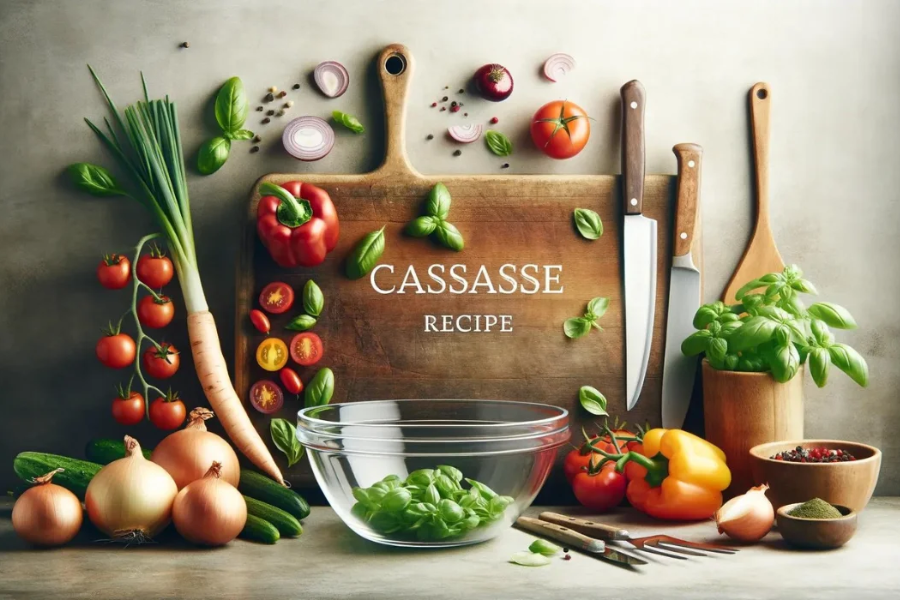Cassasse: A Culinary Heritage Bridging Tradition And Innovation
Cassasse is a traditional dish originating from [insert region where Cassasse originated], celebrated for its vibrant and diverse culinary heritage. Known for its robust flavors, Cassasse is typically a [stew, soup, casserole], combining hearty textures with aromatic spices that create a sensory delight. This dish is cherished for its [describe flavors or key characteristics, e.g., rich flavor, hearty texture, unique blend of spices], making it a popular staple in many households and a standout feature in the region’s cuisine.
What Is Cassasse?
Brief Definition and Overview
Cassasse is a traditional dish with deep roots in the culinary traditions of Caribbean, African, and Indigenous cultures. This dish highlights cassava, a starchy root vegetable, as its main ingredient. Cassava is typically combined with coconut milk, an array of spices, and sometimes meat or fish to produce a dish that is both hearty and flavorful. The resulting meal is known for its rich texture and aromatic qualities, making it a beloved staple in the regions where it is prepared.
Importance and Cultural Significance
Cassasse is much more than a meal; it holds profound cultural significance for many communities. It symbolizes cultural identity and the bonds that tie communities together. Often featured in festivals, family gatherings, and special celebrations, Cassasse is a culinary tradition that fosters communal ties and preserves the rich heritage of those who prepare it. Its preparation and enjoyment serve as a bridge between generations, ensuring that the diverse cultural traditions and histories are celebrated and passed down. In this way, Cassasse is not only a testament to the culinary skills of these cultures but also a vital part of their social fabric and historical legacy.
The History Of Cassasse
Cassasse originated in the Caribbean, particularly on the French-speaking islands of Martinique and Guadeloupe. It is believed to have been introduced by African slaves who adapted their traditional cooking techniques and ingredients to create this unique dish. Using local ingredients like cassava, coconut milk, and an array of spices, they crafted a meal that has since become emblematic of the region’s culinary heritage. Over time, Cassasse has become a staple in Caribbean cuisine, celebrated for its rich flavors and cultural significance. Today, it is enjoyed by both locals and tourists, often featured in restaurants and at cultural festivals, showcasing the enduring legacy of its origins.
The Roots Of Cassasse: A Testament To Peasant Ingenuity
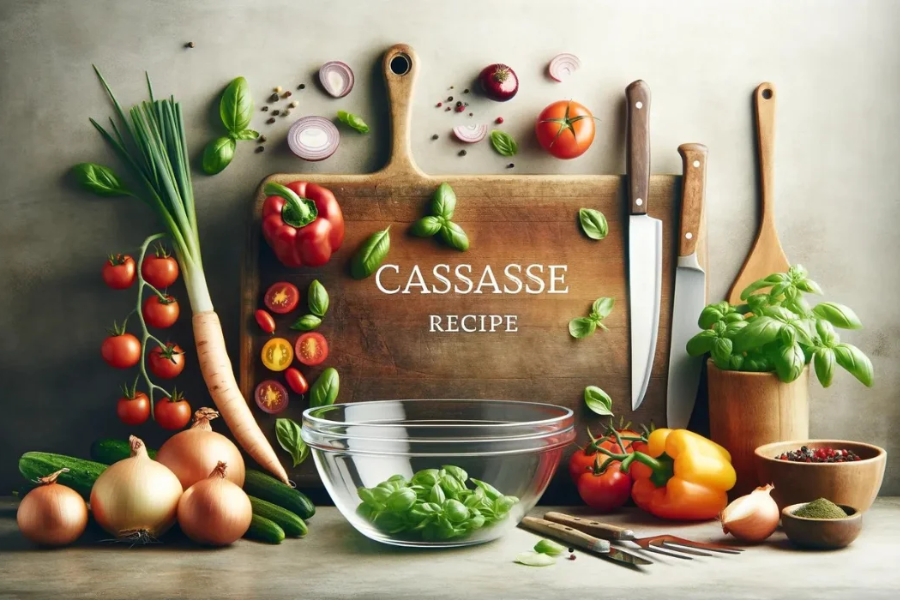
Cassasse stands as a tribute to the resourcefulness and creativity of peasants from a bygone era of culinary ingenuity. Born out of necessity, this dish was a clever combination of easily accessible ingredients, crafted to make the most of limited supplies during tough times. What began as a basic sustenance meal evolved into a culinary art form, with generations of cooks leaving their distinctive marks on its preparation.
Over time, Cassasse became a tapestry woven from the contributions of countless families, each adding their unique twists and secret ingredients. This regional and cultural variation allowed the dish to flourish across different landscapes, from coastal communities to mountain villages. Every locality embraced Cassasse, infusing it with their own interpretations and flavors, creating a rich mosaic of culinary tradition that continues to be celebrated today.
Origins Of Cassasse
Cassasse hails from the Caribbean, with its roots deeply embedded in the indigenous and Creole communities of islands such as Haiti and the Dominican Republic. This dish is a reflection of the rich culinary traditions of these regions, showcasing their agricultural practices and cultural heritage.
Traditionally, cassasse was prepared using locally sourced ingredients like cornmeal and coconut milk, which were dietary staples among the indigenous populations. These ingredients were readily available and formed the basis of many traditional dishes. Over time, cassasse has evolved, incorporating a variety of new ingredients and techniques, yet it remains a beloved dish. Its continued popularity is a testament to the rich cultural history and culinary ingenuity of the Caribbean, symbolizing the region’s ability to adapt and innovate while honoring its past.
Where To Find The Best Cassasse
If you’re eager to savor the best Cassasse, there are a few notable spots you should visit, especially if you’re in the Caribbean or even in Texas. A top destination to experience this delectable dish is Island Echo Caribbean Cuisine in Houston, Texas. This family-owned restaurant is renowned for its authentic Caribbean dishes, and their Cassasse is particularly celebrated.
Another excellent place to enjoy Cassasse is D Caribbean Curry Spot Cuisine in Pearland, Texas. Specializing in Caribbean cuisine, this restaurant is well-known for its flavorful take on Cassasse, drawing patrons who appreciate genuine Caribbean flavors.
While these Texan establishments offer fantastic versions of the dish, for an authentic Caribbean experience, exploring local eateries and markets in Haiti and the Dominican Republic will provide a taste of Cassasse in its traditional setting, where you can truly appreciate the cultural heritage behind this beloved dish.
Cultural Significance
Role in Celebrations
Cassasse is more than a dish; it is a cultural emblem often served during specific holidays and festivals. For instance, during [insert holiday or festival], families come together to prepare and enjoy Cassasse, creating lasting memories and reinforcing cultural bonds. The preparation of Cassasse during these occasions is typically a communal effort, with each family member contributing to the process, from gathering ingredients to cooking.
The cultural significance of serving Cassasse during celebrations is profound. It embodies not only the culinary heritage of the region but also the values of togetherness, hospitality, and tradition. Sharing this dish during special occasions strengthens community ties and preserves cultural practices, passing them down through generations.
Symbolism and Meaning
The ingredients and preparation methods of Cassasse carry deep symbolic meanings that reflect the cultural values and beliefs of the communities who cherish it. For example, [insert ingredient] symbolizes [insert meaning], while the method of slow cooking over an open fire represents patience and care. These symbolic elements elevate Cassasse from a mere meal to a reflection of the cultural identity and ethos of its people.
The thoughtful selection of ingredients and the communal cooking process highlight the importance of unity and cooperation. Each step in preparing Cassasse is imbued with cultural significance, making it a dish that not only nourishes the body but also the spirit, serving as a reminder of the rich heritage and shared values of the community.
How To Make Cassasse at Home
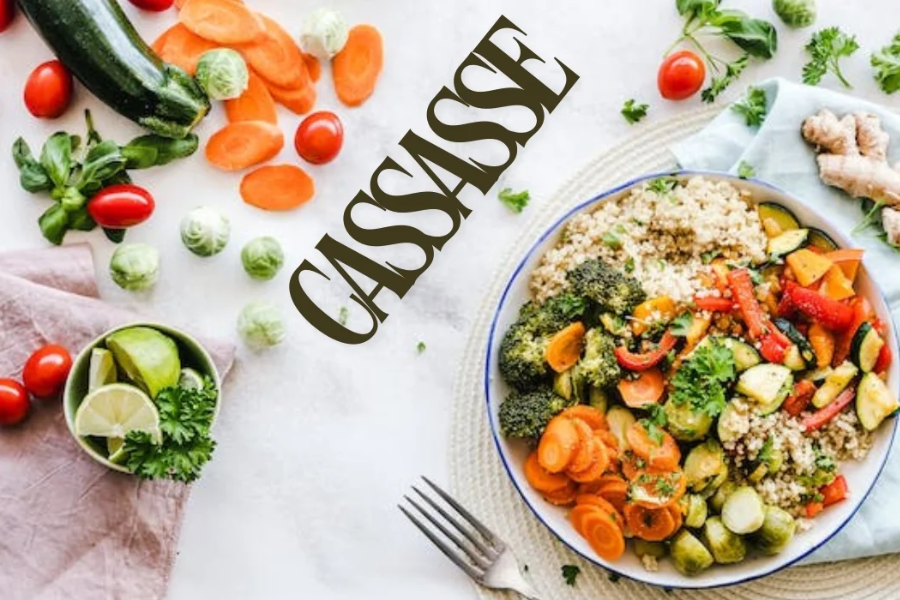
If you can’t visit the Caribbean or dine at the recommended restaurants, you can still experience the flavors of Cassasse right in your own kitchen. Here’s a straightforward recipe to help you prepare this delicious dish at home:
Ingredients:
- 2 lbs cassava, peeled and finely grated
- 1 cup coconut milk
- 1 onion, finely chopped
- 2 cloves garlic, minced
- 1 teaspoon dried thyme
- 1 teaspoon dried parsley
- 1 teaspoon chopped scallions
- Salt and pepper, to taste
- 1 lb chicken or fish, cooked and shredded
- Cooked rice and beans, for serving
Instructions:
- Prepare the Mixture: In a large mixing bowl, combine the grated cassava, coconut milk, chopped onion, minced garlic, thyme, parsley, scallions, salt, and pepper. Mix thoroughly until well incorporated.
- Layer the Dish: Grease a baking dish and spread half of the cassava mixture evenly on the bottom of the dish.
- Add Protein: Place the shredded chicken or fish over the first layer of cassava mixture.
- Top Layer: Cover the protein with the remaining cassava mixture, smoothing it out with a spatula.
- Bake: Preheat your oven to 375°F (190°C). Bake the dish for approximately 45 minutes, or until the top layer is golden brown and the cassava is cooked through.
- Serve: Allow the dish to cool slightly before serving. Enjoy your homemade Cassasse with a side of rice and beans for a complete meal.
Nutritional Value Of Cassasse
Health Benefits of Cassasse
Cassasse is not just a flavorful dish; it also offers a range of health benefits due to its nutrient-rich ingredients. Root vegetables like cassava are packed with essential vitamins and minerals that contribute to overall health. Additionally, the spices used in Cassasse often have anti-inflammatory and antioxidant properties, which can support a healthy immune system and reduce inflammation.
Nutritional Components
A typical serving of Cassasse is a nutritious option, providing a balanced mix of carbohydrates, fiber, and important vitamins such as A and C. The root vegetable cassava is a good source of dietary fiber, which aids digestion and promotes a healthy gut. When prepared with protein sources like meat or legumes, Cassasse becomes a well-rounded meal, offering the necessary protein to support muscle health and overall bodily functions.
Myths and Facts
There are several myths surrounding Cassasse, such as the belief that it is overly heavy or unhealthy. However, when made with fresh and natural ingredients, Cassasse can be a wholesome and nourishing dish. The key is in the preparation—using nutrient-dense components and avoiding excessive amounts of unhealthy fats or additives can ensure that Cassasse remains a healthy and satisfying meal option.
Is Cassasse Healthy?
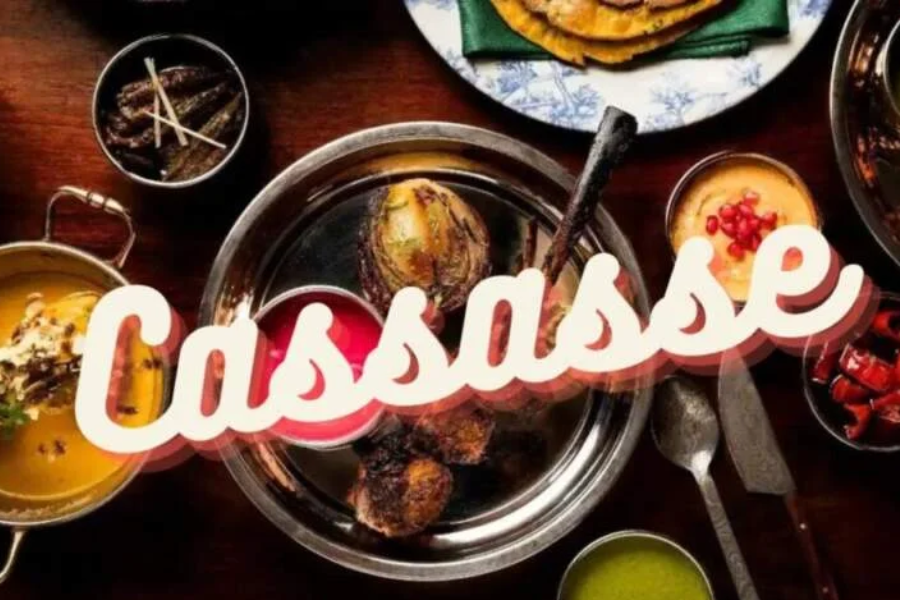
Cassasse can be a healthy option depending on individual dietary needs and body conditions. It’s advisable to consult with a healthcare provider before making significant changes to your diet. This dish, primarily made from cornmeal and coconut milk, offers several essential nutrients. Cornmeal provides a valuable source of carbohydrates and dietary fiber, which contribute to energy levels and support digestive health. Coconut milk adds healthy fats and is rich in B vitamins, along with minerals like magnesium and potassium.
However, the health benefits of Cassasse can vary based on the specific ingredients and portion sizes used in different recipes. When prepared with fresh, wholesome ingredients and in moderation, Cassasse can be a nutritious and satisfying part of a balanced diet. It’s important to consider the overall composition of the dish, including any additional ingredients, to ensure it aligns with your dietary goals and health needs.
Step By STEP Guide Of Serving Of cassasse:
Serving and Enjoying Cassasse
- Plating:
Choose a traditional or visually appealing plate to serve Cassasse. Opt for a plate that highlights the dish’s vibrant colors and textures, enhancing its visual presentation. - Garnishing:
For an added touch of freshness and color, consider garnishing Cassasse with fresh herbs such as parsley or cilantro. This not only enhances the dish’s appearance but also adds a hint of aromatic flavor. - Accompaniments:
To complement Cassasse and create a well-rounded meal, serve it with a variety of side dishes:- Meats: Pair Cassasse with grilled or stewed meats such as chicken, pork, or beef to enrich the meal with additional flavors and protein.
- Stews: Enjoy Cassasse alongside hearty stews or soups, which can add depth and variety to your dining experience.
- Vegetables: Include cooked vegetables like okra, pumpkin, or callaloo to provide a balance of nutrients and textures on the plate.
- Enjoying the Dish:
Serve Cassasse hot to fully appreciate its rich, cultural flavors. Encourage diners to savor each bite and enjoy the unique blend of ingredients and the effort put into its preparation.
Following this guide will help you present and enjoy Cassasse in a manner that honors its cultural significance and maximizes the dining experience.
The Future Of Cassasse
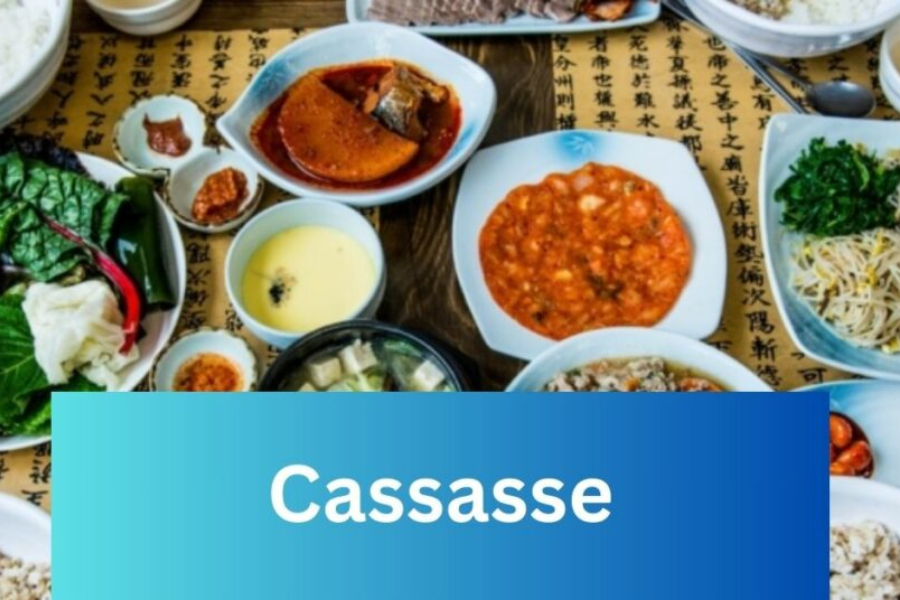
Preserving Tradition
In our increasingly interconnected world, the importance of preserving traditional dishes like Cassasses cannot be overstated. Documenting recipes and cooking methods is essential to maintaining this rich culinary heritage. This not only safeguards the cultural significance of the dish but also ensures that future generations can experience and appreciate its unique flavors and techniques.
Embracing Innovation and Modernization
While preserving tradition is important, innovation plays a crucial role in keeping Cassasses relevant. Contemporary chefs are experimenting with new approaches to this classic dish, making it more appealing to younger generations and global audiences. By infusing modern culinary techniques and ingredients, they create fresh, exciting interpretations that still honor the dish’s origins.
Impact of Global Cuisine Trends
The influence of global cuisine trends, such as the growing popularity of plant-based diets, is shaping how Cassasses is prepared and consumed. These trends present a unique opportunity to introduce this traditional dish to a wider audience. By adapting Cassasses to align with contemporary dietary preferences, it can reach new fans while retaining its authentic essence.
FAQs About Cassasse
Q: What is Cassasse?
A: Cassasse is a traditional dish with deep roots in the culinary traditions of Caribbean, African, and Indigenous cultures. It primarily features cassava, a starchy root vegetable, often combined with coconut milk, various spices, and sometimes meat or fish.
Q: Where did Cassasse originate?
A: Cassasse originated in the Caribbean, particularly on the French-speaking islands of Martinique and Guadeloupe. It is believed to have been introduced by African slaves who adapted their traditional cooking techniques and local ingredients.
Q: What are the main ingredients in Cassasse?
A: The main ingredients in Cassasse typically include cassava, coconut milk, spices, and sometimes meat or fish. Other variations might include vegetables and different seasonings.
Q: How is Cassasse prepared?
A: Cassasse is usually prepared by grating cassava and mixing it with coconut milk, spices, and other ingredients. The mixture is then layered and baked until golden brown. It is often served with rice, beans, and additional sides like vegetables or stews.
Q: Why is Cassasse culturally significant?
A: Cassasse holds profound cultural significance as it symbolizes cultural identity and community bonds. It is often featured in festivals, family gatherings, and special celebrations, fostering communal ties and preserving the rich heritage of the regions where it is prepared.
Q: Can Cassasse be made in a healthy way?
A: Yes, Cassasse can be a healthy option when made with fresh and natural ingredients. Using nutrient-dense components and avoiding excessive unhealthy fats or additives can ensure that Cassasse remains a wholesome and nourishing dish.
Q: Where can I find the best Cassasse?
A: While Cassasse is best experienced in its traditional setting in the Caribbean, notable places to try it include Island Echo Caribbean Cuisine in Houston, Texas, and D Caribbean Curry Spot Cuisine in Pearland, Texas.
Conclusion
Cassasse is a culinary gem that beautifully blends tradition and innovation. Its origins in the Caribbean and its evolution through the influence of African and Indigenous cultures highlight its rich and diverse heritage. The dish is not only celebrated for its robust flavors and hearty textures but also for its cultural significance, symbolizing community and continuity.
As global cuisine trends evolve, so does Cassasse, adapting to new dietary preferences while preserving its authentic essence. Contemporary chefs are reimagining this classic dish, ensuring its appeal to younger generations and global audiences. By embracing both tradition and innovation, Cassasse continues to thrive, maintaining its place as a beloved staple in many households and a standout feature in the region’s cuisine.
Whether enjoyed in a local Caribbean eatery, a Texan restaurant, or in your own home, Cassasse offers a taste of history, community, and culinary ingenuity. Its enduring legacy is a testament to the resourcefulness and creativity of the cultures that have nurtured and celebrated this dish for generations.
